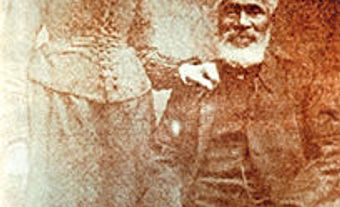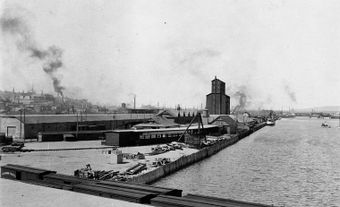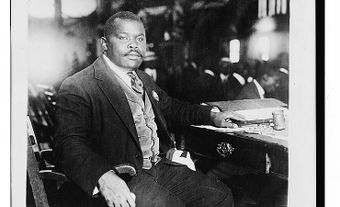Prior to 1960, Black immigrants from Africa comprised a very small, scattered and almost unknown group of newcomers to Canada, although Africans of European and Asian ancestry had a clearer presence. According to the 2021 census, 1,394,170 Canadians reported being of African origin. (See also Black Canadians.)
Overview
The term “African” includes indigenous peoples of West, East and Southern Africa, the Hamito-Semites of Ethiopia, and people of other ethnocultural origins who view Africa as home by virtue of several generations of settlement on the African continent. Chief among these latter groups are Europeans of British, Portuguese, Afrikaner-Dutch and Jewish ethnocultural origins, people of mixed descent, and Asian Indians of Muslim, Hindu and Goan Christian religious-cultural backgrounds.
Immigration Patterns to Canada
Historically, Canadian Immigration policy has not favoured immigration by Asians and Africans (see Immigration in Canada.) From 1946 to 1950, Africans comprised only 0.3 per cent of new immigrants to Canada. This figure rose to an average of only 1 to 2 per cent over the next 20 years. With the 1966 White Paper on Immigration and the attempt to introduce a non-discriminatory screening process, the proportion of African immigrants rose to an average of approximately 2 per cent from 1968 to 1970.
The new system was more objective, but it was also highly selective. It favoured certain countries, including the Black countries of Nigeria and Ghana. In 1972–73, with Canada's offer to accept some 7,000 Ugandan Asians, the proportion of African immigrants rose to 6.8 per cent of total immigration, and it remained at an average of about 5.2 per cent from 1975 to 1978. This corresponded with the movement of Portuguese and British settlers to Canada after Angola and Mozambique (1975) and Zimbabwe (1980) achieved independence. From 1973 to 1983, some 16,000 South Africans, mainly of non-Black ethnic origins, entered Canada. The steady, relatively high immigration from Tanzania and Kenya, too, reflected Asian Indian rather than Black African migration.
The introduction of the Green Paper on Immigration (1976) had the effect of restricting the entry of potential landed immigrants in the “independent” class. This regulation curtailed the movement of people from Black African countries. This was compounded by the fact that there were just three Canadian Citizenship and Immigration offices in Africa at the time. Two of the offices were located in Yamoussoukro, the capital of the Ivory Coast (Côte d'Ivoire), which served more than 20 widely dispersed neighbouring countries; and Nairobi, the capital of Kenya, which served 19 equally dispersed countries in the northeastern part of the continent. By contrast, the third office, located in Pretoria, the administrative capital of South Africa, served just 5 countries at Africa's southern tip. The 1976 Immigration Act also established a new “refugee class,” and in 1984, Canada accepted 684 refugees from Ethiopia. Most of these people were sponsored by the federal government, but some were privately funded. (See Canadian Refugee Policy.)
The 1978 Immigration Act had the positive consequence of allowing Canadian citizens to sponsor close relatives. This stipulation was especially beneficial for landed immigrants from the Republic of South Africa and from Tanzania, Kenya, Uganda, Angola, Zimbabwe (formerly the Republic of Rhodesia), and, to a lesser degree, Nigeria and Ghana. In 1984, 3,552 people (comprising about 4 per cent of Canada's total immigration that year) immigrated to Canada from Africa. Most of the immigrants from this group in the “independent class” came from the Republic of South Africa and Madagascar (Malagasy Republic).
At that time Canada's immigration policy favoured entrepreneurs and self-employed immigrants with the funds to establish business operations capable of employing Canadian citizens. Such entrepreneurs were more likely to emerge from the affluent European-Asian African groups than from Black African groups. Overall, most Africans in any of the ethnocultural groups were drawn from the former English-speaking colonies of Africa; a smaller number originated in the former French-speaking colonies of Africa, chiefly from Mali, Senegal, the Democratic Republic of the Congo (formerly Zaire), Madagascar and the Ivory Coast.
According to the 1981 census, there were 45,215 persons of African origin in Canada, comprising a mere 0.19 per cent of the total population; between 1996 and 2001 the number of people of African origin rose by 32 per cent, whereas the overall population grew by 4 per cent. In 2001, about 48 per cent of Black immigrants who came to Canada in the 1990s were born in Africa. By 2006 the census recorded 138,750 persons who identified themselves as African; identifying Africans in the census who have not been identified elsewhere such as South African, Ethiopian, Ugandan, Nigerian, etc. has led to an under-reported population, especially for individuals who identified themselves as British, French or of other cultural identities.
The rise in the African presence in Canada reflected the political instability, factional wars and violence in many parts of the African continent, particularly from the countries of Ethiopia, Kenya, Somalia, Tanzania and Uganda on the eastern horn of Africa. In Southern Africa, the former Republic of South Africa, a country in transition from white to Black rule, also experienced an exodus. Large communities of immigrants also hailed from Egypt and Morocco in North Africa.
Many people entered Canada in the refugee class, followed by the family class. A significant number of immigrants from the “independent” and “entrepreneur” classes came from North and South Africa, the geographic poles of the continent.
Settlement and Integration
Prior to 1970, only a sprinkling of people from African countries settled in Canada, mainly from Ethiopia, Kenya, South Africa, Zimbabwe, and Zambia. Many African countries attained independence about that time: Ghana (1957), Nigeria (1960), Uganda (1962), Kenya (1963), and Zambia and Tanzania (1964). White Rhodesia declared its independence from Britain in 1965, and South Africa declared itself a republic and withdrew from the Commonwealth in 1961. Given these changes, it has been difficult to judge the ethnic mix that entered Canada during those years. Many newcomers may have been European settlers emigrating from a changing Africa, but it seems certain that Black Africans as well began to settle in Canada in the 1960s.
Ethiopian refugees accepted into Canada during the 1980s and early 1990s were a distinct linguistic-cultural group from other Africans. Refugees from the secessionist Red Sea province of Eritrea tended to be well educated and skilled. Many speak Italian because of the Italian occupation of Ethiopia during the Second World War. In 1991, Eritrea won its independence after the longest war of recent African history. An interesting but tiny Ethiopian subgroup (of some 10,000 to 12,000 people) are the Falashas (Ethiopian Jews), who come from the northwest provinces of Ethiopia. They practise an ancient form of Judaism but have no knowledge of Hebrew, and their priests use Ge'ez, the Semitic-Sabaean script originating in the 4th century, as their liturgical language. In 1984, and again in 1991, thousands of Ethiopian Jews were secretly airlifted to Israel.
In 1991, most Africans settled in Ontario, followed by Quebec; more people settled in British Columbia and Alberta after 1984. Ontario has the largest proportion of people from Eastern Africa. By 2006, a population of 77,960 French-speaking Africans had made the province of Quebec their home. Many were refugees from the massacres and genocide in countries such as Rwanda and Burundi. Many Africans speak an African language in their home settings, though, in general, Africans who come to Canada have a good working knowledge of either English or French.
The Canadian African Newcomer Aid Centre in Toronto, founded in 1984 and serving Ontario's African population, reported that many African immigrants kept a low profile as they tried to integrate and overcome culture shock. Changes in values, such as respect for elders and community leaders, emphasis on modesty, obedience and humility, shift from collectivist “we” to North American individualist “me” thinking, lack of traditional community support systems, and changes in spousal power relations, took a heavy toll. Many people have required counselling. Extended periods of spousal separation, coping with Canadian winters, learning to ask for help, and lack of accreditation for qualifications from African countries further add to life complexities. Educated immigrants are often underemployed given their skills, education and experience. African organizations, however, provide a base for networking and emotional support.
Like migrants everywhere, African newcomers to Canada settle in major cities in search of employment, affordable housing and schools for their children.
As a group, Black Africans generally share one area of common experience - that of prejudice and discrimination and racism in the host country. (See Anti-Black Racism in Canada.) Unemployment and underemployment in Canada has remained a major problem for many newcomers. According to Statistics Canada, immigrants born in Africa have experienced difficulties in the labour market, regardless of when they immigrated to Canada.
Ugandans and Other Asians
In 1972, with the so-called “Africanization” of Uganda, approximately 50,000 Ugandan Asians were expelled. Approximately 7,000 were invited to settle in Canada; however only a limited number accepted the offer. The 2021 census reported 8,280 people of Ugandan origin in Canada. Given the variety of skills and professional background they brought with them, coupled with their initiative and enterprising attitudes, most Ugandans have made steady socioeconomic progress in Canada.
The largest group of Ugandan Asians in Canada are the Ismalliyah (Ismailis), a sect of the Shiah branch of Islam. A smaller Islamic sect in Canada are the Ithna-Ashariyah. The Ismailis, and to a lesser degree the Ithna Asheri, have developed strong ethnocultural and religious groups that have contributed to their socio psychological integrity and their economic progress. Ismailis view Geneva-based Prince Karim Aga Khan as their spiritual leader. According to Dr. Rahim Mohamed in 2017, there are around 80,000 members of the Ismaili community in Canada.
Gujarati Hindus
Gujarati Hindus, traditionally a business caste in India and East Africa, have been successful in business and professional occupations in Canada. They tend to be a conservative people, practising the Hindu-Gandhian teachings of Ahimsa (nonviolence), asceticism and respect for all life. Members are mostly vegetarian; marriages are endogamous within similar castes and are frequently arranged by parents.
Goan Indians
Goan Indians originated in the Portuguese-dominated province of Goa on the Malabar Coast, 402 km south of Mumbai (formerly Bombay) India. Many contemporary Goans have some Portuguese background, have Portuguese names, and are generally Roman Catholic and English-speaking. When ousted by Idi Amin in 1972, many came to Canada, settling mainly in Toronto. Goan Indians have their own organizations, apart from people coming directly from Goa, and apart from the large Portuguese communities such as the one in Toronto. (See Portuguese Canadians.)
The Asian Indian subgroups have more bonds of kinship with people from India and Pakistan and with the religions and cultures of those countries than with Black Africans.
Angola-Mozambique Portuguese
In 1976–77, 2,100 “returnees” (white and coloured Portuguese) from the newly independent territories of Angola and Mozambique were admitted into Canada, even though they did not qualify as genuine refugees since they held Portuguese passports. The Portuguese settlers in Africa had remained Portuguese citizens. Two factors contributed to this “humanitarian” gesture by Canada: pressure from the Portuguese Canadian community and requests from the Portuguese ambassador to Canada to help ease the burden of returning white colonials. Most returnees entered Canada in 1978–79 under contract as skilled workers to firms in Canada. These returnees prospered and did not rely on the support of Portuguese aid societies. They integrated well into the larger society, possibly because of their fluency in English.
South Africans and Zimbabweans
For almost half a century, the political climate of South Africa was characterized by tension and uncertainty. By far the largest number of people who have entered Canada from any sub-Saharan region have originated in the former Republic of South Africa. In the 2021 census, 49,835people reported South African origins.
South Africans include many English-speaking British and Jewish people, small groups of Afrikaners (Dutch French Huguenot), coloureds (mixed descent), Asian Indians and Black Africans. Professionals of all types (university professors, medical doctors, teachers, writers, artists and some skilled artisans) are found in all the groups. In 2016, 8,090 people reported having Zimbabwean origins.
Arts and Culture
African Canadian artists, feeling marginalized from the mainstream artistic community, have created their own unique music, writing, poetry and painting. Many looked to their African roots for inspiration, vision and identity. Toronto is one of the largest centres for African music in North America, with each region of Africa contributing its own distinct, rich musical tradition.
In 1990, Thaddy Ulzen, a Ghana-born physician, was the co-founder and driving force for the creation of Afrofest, the annual African Music Festival. The Canadian Artists Network: Black Artists In Action Festival (CAN:BAIA) was founded in 1995 to celebrate African identity, bringing African artists out of their isolation for the exchange of ideas and the promotion of their talents. The organization Celebrating African Identity (CELAFI) was established to link international Black artists and their Canadian counterparts through conferences, and performances of the visual arts, music, dance, film and literature. African themes and aesthetic traditions have been celebrated in Canada by Uganda-born David Kibuuka and Nigerian Macaulay Eteli and by dancer-choreographer Len Gibson, who have challenged our understanding of Canadian art.

 Share on Facebook
Share on Facebook Share on X
Share on X Share by Email
Share by Email Share on Google Classroom
Share on Google Classroom






